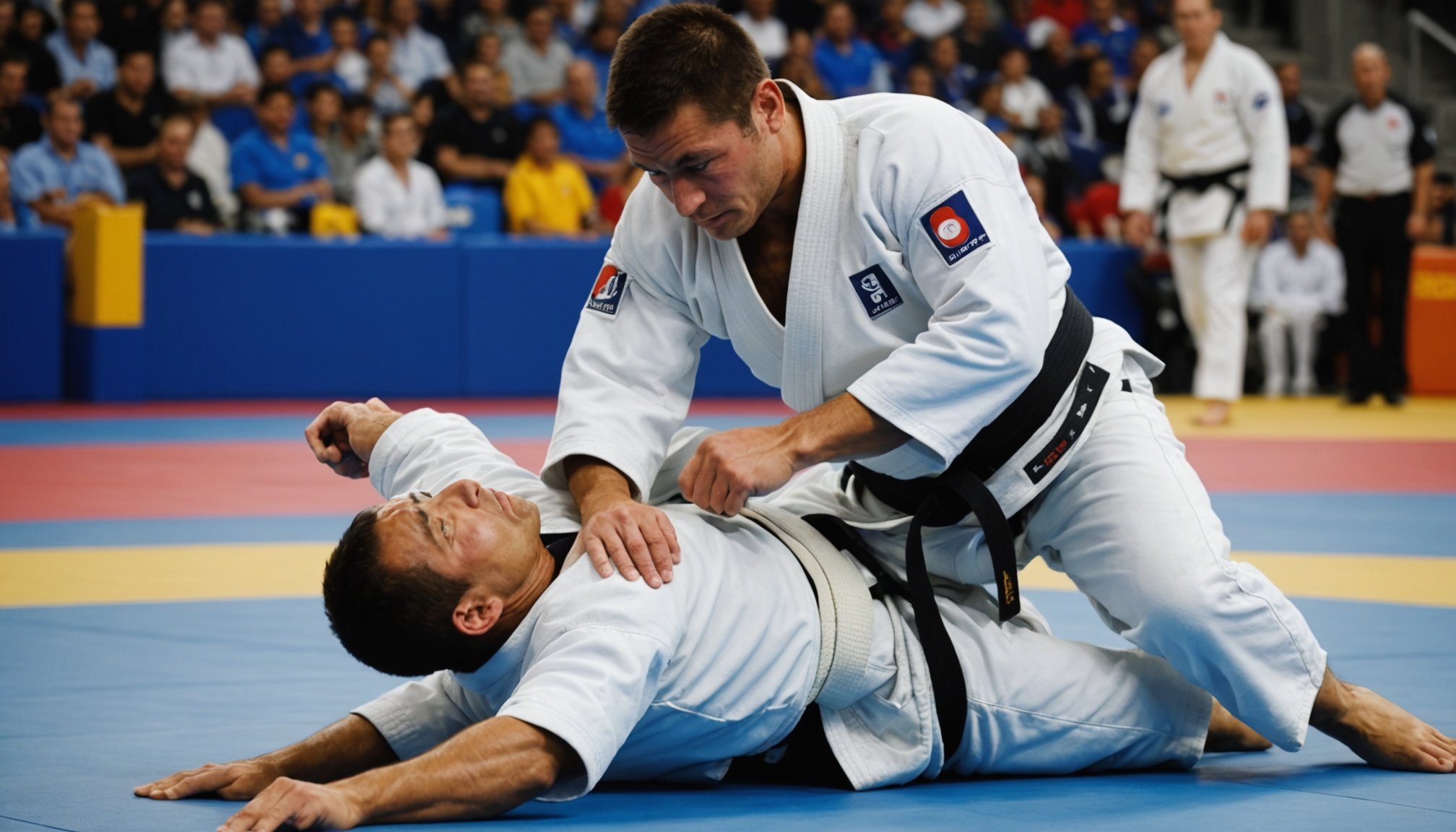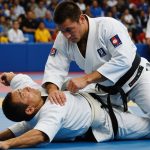Importance of Grip Strength in Judo
Understanding grip strength in judo is crucial due to its significant role in both techniques and competitions. Grip strength in judo is not just a single facet but a comprehensive component that influences an athlete’s ability to execute effective throws, holds, and defensive maneuvers. It’s the foundation that allows judokas to maintain control over their opponents, dictating the pace and direction of the match.
The impact of grip strength on overall judo performance enhancement cannot be overstated. A strong grip will give an athlete the upper hand when vying for advantageous positions, potentially turning the tide in a close match. More than just physical endurance, grip strength contributes to the strategic pressure one can apply, affecting both the offensive and defensive capabilities of a judoka.
Also read : Thriving under pressure: essential focus techniques for dressage competitors
For judo athletes, essential considerations for grip strength include regular training focused on enhancing grip endurance and muscle coordination. This can involve exercises specifically designed to improve grip like towel pull-ups, squeezing hand grippers, and grip-specific lift variations. Understanding these aspects can lead judokas to better strategy implementation and potentially an upper edge in competitive scenarios. Making grip strength a key focus in training can contribute significantly to advancing a judoka’s skills and competitive success.
Techniques to Develop Grip Strength
Improving grip strength is essential for judo enthusiasts. Effective techniques exist specifically for judo, focusing on finger, hand, wrist, and forearm strength.
In the same genre : Elevate your cricket game: unleashing ultimate fielding agility with expert strategies
Finger and Hand Strengthening Exercises
Strengthening your fingers and hands is paramount. Grip strength exercises include using hand grippers or squeezing a rubber ball. Judo-specific exercises may involve towel pull-ups, where you drape a towel over a bar and hold on instead of using the actual bar. This simulates gripping a judo opponent’s gi, enhancing finger dexterity.
Wrist and Forearm Conditioning
Developing the wrist and forearm muscles is crucial. Exercises like wrist curls with dumbbells or resistance bands effectively build these areas. For judo athletes, wrist roller exercises, where you wind a weight up and down on a stick, mirror the wrist movements used in judo throws and holds. These techniques for grip strength improve both endurance and power.
Functional Grip Strength Drills
Judo practitioners benefit from drills that replicate actual judo grips. Practicing shin-tai grips using resistance ropes lets athletes simulate match scenarios. Slamming a medicine ball can also offer dynamic strength gains, building explosive grip strength crucial for judo. These techniques for grip strength not only improve grip but also enhance overall performance in the sport.
Exercises Beneficial for Judo Athletes
For judo athletes, improving grip strength is crucial, and integrating these exercises into training regimens for judo can significantly enhance performance. Below are some effective exercises to strengthen your grip.
Dead Hangs and Pull-Up Variations
Dead hangs are simple yet effective. Hang from a pull-up bar, maintaining a firm grip for as long as possible. Increase duration gradually to improve endurance. For added challenge, try pull-up variations. Begin with standard pull-ups and progress to towel pull-ups, which demand more from your grip muscles. Aim for 3-4 sets of 6-10 reps, adding weight as you progress.
Farmer’s Walk for Grip Endurance
The Farmer’s Walk involves carrying heavy weights, like dumbbells, across a set distance or time. This exercise targets grip endurance and overall strength. Begin with a moderate weight, walking 30-50 meters, then gradually increase the distance or weight. Incorporate 2-3 sets into your weekly regimen for best results.
Plate Pinches and Towel Hangs
Plate pinches are excellent for isolating the fingers and thumbs. Pinch a weight plate between your fingers and thumb, holding for as long as comfortable. Towel hangs, where you hang from a bar using a towel, further target grip strength. Aim for 3 sets of each, holding for 20-30 seconds initially, and increase duration over time for maximal benefit.
Integrating Grip Strength into Training Regimens
When it comes to athlete training integration, effectively balancing grip strength with technical skill practice is crucial. One strategic approach is to schedule grip training on separate days from intense technical drills. This allows muscles to recover and minimizes fatigue, ensuring neither aspect of the training suffers.
Training tips for grip strength include incorporating a variety of exercises such as dead hangs, farmer’s walks, and towel pull-ups. These exercises target different muscles and improve overall stamina. Tailor your grip strength training to complement your sport-specific skills for optimal results.
Monitoring progress is a vital aspect of any training routine. Keep track of grip performance by measuring duration and resistance levels regularly. This helps in identifying areas needing improvement and ensuring continuous progress.
Adjustment to the regimen should be based on individual performance. If progress stalls, consider increasing the intensity or frequency of grip exercises. Conversely, if technical skills seem impacted, reduce the volume temporarily to recalibrate balance.
Experienced judo practitioners recommend prioritising proper rest periods within sessions. Overworking the grip can lead to injuries, setting back both strength and skill development. Consistent, well-rounded training promotes strength and technique, paving the way for enhanced athletic prowess.
Visual Aids and Demonstrations
In judo training, video demonstrations and visual exercises play a crucial role in enhancing comprehension and retention. Viewing techniques in action provides a dynamic insight that is difficult to garner from text descriptions alone.
Instructional Videos on Key Techniques
Judo practitioners can greatly benefit from instructional videos. These clips often dissect each move, offering slow-motion replays and multifaceted views. Such detailed representations help in understanding the nuances of techniques — an essential aspect for both beginners and advanced judokas.
Infographics on Exercises and Progressions
Infographics serve as a valuable tool in showcasing exercises and their corresponding progressions. They condense complex movements into easily digestible visuals, mapping out step-by-step progressions that are particularly effective for reinforcing learning. These tools allow visual learners to see the “big picture” while also understanding each component’s role.
Expert Quotes and Testimonials
Incorporating expert quotes and testimonials from renowned coaches and athletes in the judo community can significantly enhance the learning experience. Such insights provide context and real-world applicability to the techniques demonstrated. A well-placed quote or testimonial can underscore the importance of a certain method or philosophy, lending credibility and motivating practitioners to engage deeply with the material.











